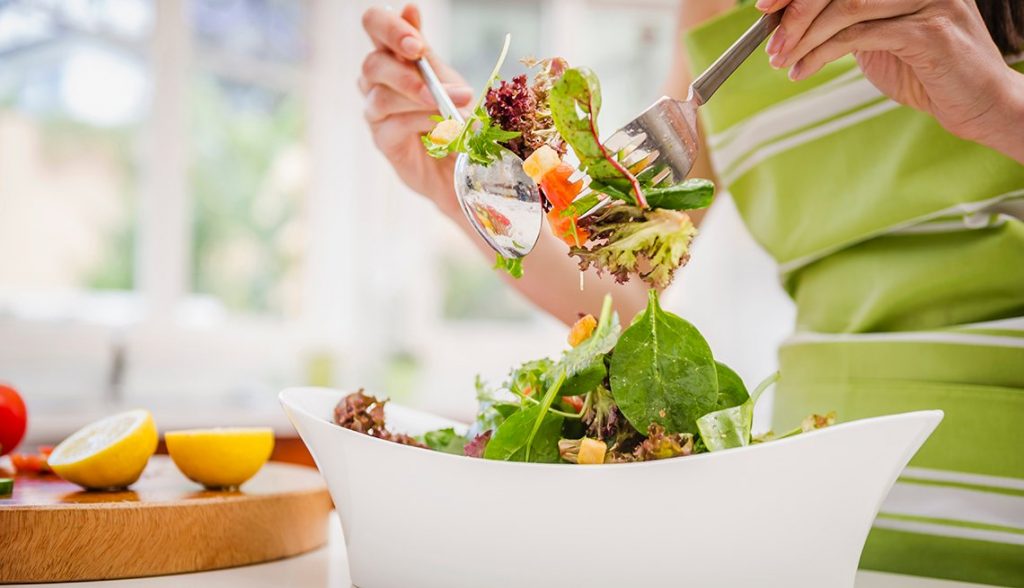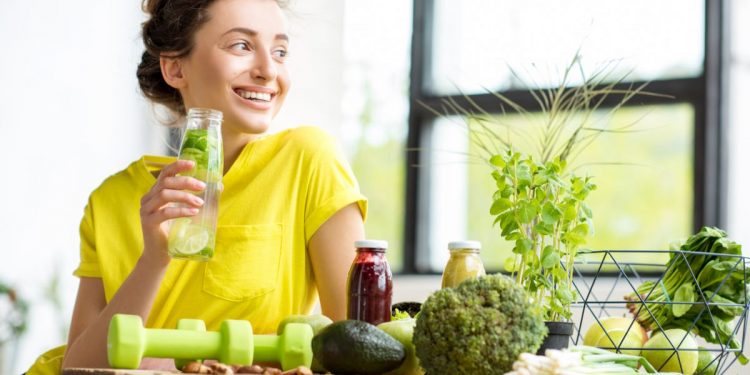Everyone knows that the immune system protects our bodies from infection; Exactly how it works reflects more mystery. The immune system has two parts: the instinctive immune systems ; And adaptive . Each part consists of unique ingredients and functions in different ways to protect our bodies.

The fungal part of our immune system includes non-specific defenses like our slightly acidic skin, to prevent bacteria from growing on it. The mucus that lines your mouth is another great example of instinctive immunity. This sticky substance contains enzymes that kill anything bad we eat (think: that sandwich we left out of the fridge).
The adaptive part of our immune system is more specific and strategic. Instead of killing everything it comes into contact with such as the instinctual part of the system, this sophisticated machine includes specific cells such as T and B lymphocytes. These cells contain specific receptors that recognize when foreign substances such as viruses or bacteria enter the body.
T cells contain specific receptors that help them identify pathogens and mount an attack against them from the immune system. Exciting B cells can coat pathogens with antibodies like we cover french fries with ketchup to make them tastier. The bacteria or viruses coated with the antibodies become “very tasty” to the immune system and can be easily destroyed. End of the game: our body protects us, we don’t get sick!
What harms the immune system?
Some research suggests that decreased daylight with changing seasons correlates with immune function. With shorter days, some cells of the innate immune system do not function as hard as they do with prolonged exposure to sunlight. This research also showed a greater increase in pathogenic bacteria because part of the immune system is not functioning as strongly as required.
Stress
Increased stress usually means a rise in the stress hormone cortisol. This rise in cortisol has different effects on our immune system depending on the duration of the stress. With short-term stress, the instinctive part of our immune system is stimulated while adaptation is suppressed. So with stress, our immune system changes, resulting in less protection for the body.
High cortisol that stimulates the immune system can lead to a high inflammatory response in the body. Often as cortisol rises comes the release of inflammatory-promoting cytokines. These molecules can increase the level of severity of the inflammatory response, signaling our immune system to propagate or create immune cells. An elevated inflammatory response has been hypothesized to be the basis for many factors that can lead to poor health and / or fatigue – as the proliferation of many immune cells consumes a lot of energy!
Diet
Remember this old saying, “You are what you eat”? Well, it’s true! Our diet plays a huge role in the health of our immune system. Micronutrients (think vitamins and minerals) and macronutrients (think proteins , carbohydrates and fats) play a role in supporting a healthy immune system. Several essential minerals such as zinc support both the instinctive and adaptive immune system. Other vitamins like Vitamin E can provide antioxidant support to prevent damage to the body when we consume fast foods that naturally stimulate the high inflammatory response. Vitamin E can also aid in the formation of immune components, including the cells themselves.
Sleep
Sleep also plays an important role in immune function. If we don’t respect our circadian rhythms – our body’s natural signals to go to bed around 11 pm. And we wake up at around 7 in the morning – or if we rotate our nightly wake times, that could lead to an increase in cortisol and could affect our immune function. Lack of sleep and its quality can disrupt our immune system, leading to increased susceptibility to infections.
How does proper nutrition support my immune system?
In addition to vitamins that support the immune system, proper nutrition found in a variety of foods and herbs proves important. The immune system symbolizes an army of fighters. If the system is a group of living, breathing soldiers, it will need resources to keep it running well. He will need weapons, shelter and food (energy).
The energy needed to operate the immune system comes from the foods we eat. It takes a large amount of energy to operate every cell that makes up our extensive immune system. Let’s dive into some of the main immune boosters featured in the recipes below.
Bay leaves
Bay leaves or Lauris nobilis represent a common shrub and kitchen spice with antioxidant and immune-supporting properties. This spice has been studied to support healthy immune function, allowing the immune system to react to pathogens while preventing the system from overreacting.
Dill
Dill’s antioxidant properties can support the immune system indirectly by repairing damage to the body and preventing an overreaction of the immune system.
Hot red pepper
Hot red pepper , a common spice, gives any dish a “measure” of flavor. The main active ingredient in any hot red pepper, the bioactive capsaicin, has been shown to have immune-modulating effects – making our innate and conditioning immune system more powerful and able to fight infection efficiently.
Ginger
Ginger , known for its bitter taste, is often used in baking or as an addition to Asian cuisine. This herb contains a powerful immune support component (by regulating the inflammatory response) in addition to its antioxidant benefits.
Mint
Peppermint or peppermint is a very popular herb that appears in a variety of dishes and desserts. The immune-boosting properties of peppermint leaf oils, although not well known, have been found to enhance adaptive immunity and remain themselves antimicrobial by nature.
Turmeric
Turmeric root contains curcumin . Curcumin extract represents known immunity. Its main vital activities, the curcuminoids, make immune signals more efficient and support cell formation in both the innate and adaptive parts of the immune system.
What are some recipes I can make to support my immune system?
Many foods and herbs have immune-supporting properties. These recipes include homemade pickles filled with dill, borscht soup, carrot and ginger soup, white bean soup, and turmeric pickle.
Homemade pickle recipe
Preparation time: 15 minutes
Total time: 1-3 hours
Ingredients:
- 12 ounces of cucumber
- Half a cup of water
- Half a cup of apple cider vinegar
- 1 tablespoon of maple syrup
- 1 tsp. Of salt
- ½ small spoon. Red pepper flakes
- ½ teaspoon ground black pepper
- Half a cup of fresh dill
- 2 cloves of garlic
- 1 bay leaf
- 1 jar 12-16 oz
How to prepare:
- Cut cucumbers into circles or long shafts.
- In a medium bowl, combine water, vinegar, maple syrup, salt, red pepper flakes and black pepper.
- Stir until the salt dissolves.
- Chop the garlic into small pieces.
- Put the cucumber in a jar and immerse it in a liquid mixture.
- Add bay leaf and dill and leave in the fridge for 1 hour.
Borscht’s recipe
Preparation time: 15 minutes
Cooking time: 25 minutes
- 2 tablespoons of olive oil
- 1 medium onion, diced
- 6 garlic cloves, minced
- 2 stalks of celery, chopped
- 1 cup carrots, chopped into cubes
- 2 cups diced beets
- 2 cups chopped cabbage
- 4 cups of vegetable broth
- 2 tbsp. From tomato paste
- 1 tsp. Celery seed
- ½ small spoon. Of spices
- 2 teaspoons salt
- ½ 1 teaspoon pepper
- Half a teaspoon of hot red pepper
- 2 tablespoons of apple cider vinegar
- Half a cup of chopped fresh dill
How to prepare:
- Heat olive oil in a large Dutch oven frying pan and fry the onions until golden brown.
- Add garlic, celery, carrots, beets, and cabbage.
- Stir until covered with olive oil.
- Add the broth and tomato paste.
- Add spices, salt and pepper.
- Cover and simmer until the beets and carrots soften.
A recipe for carrot and ginger soup
Preparation time: 10 minutes
Cooking time: 20 minutes
Ingredients:
- 1 tablespoon of olive oil
- 1 yellow onion, diced
- 1 pound carrots, cut into round rings
- 1-inch piece of diced ginger
- ½ 1 teaspoon salt
- 4 cups vegetable broth
- 1 cup coconut milk
- Pinch of black pepper
How to prepare:
- Heat a large soup bowl over medium-high heat.
- Add olive oil, onions and carrots. Fry for 5 minutes.
- Add ginger and turmeric for an additional two minutes. Add broth and salt.
- Bring it to a boil, then reduce the heat and simmer for 20 minutes.
- Mix using a submersible blender and add coconut milk.
- Garnish with black pepper.
A recipe for dipping with white beans
Preparation time – 10 minutes
Cooking time – 5 minutes
Ingredients:
- 1 14 oz. Cannellini beans can
- 1 clove of garlic
- 1 tablespoon of olive oil
- 1 tablespoon of dried mint
- 1 tablespoon. Thyme
- 3 tablespoons. Chives
- Pinch of salt and pepper
How to prepare:
- Mix all ingredients in a puree.
- Cover with chives and serve on toasted French bread slices.
Pickled cabbage recipe with turmeric
Preparation time: 15 minutes
Ingredients:
- 1 pound shredded cabbage
- Onion, sliced
- 2 cloves of minced garlic
- 1 teaspoon salt
- 1 teaspoon ginger
- ½ small spoon. Dried turmeric
- 1 jar 14-16 oz.
How to prepare:
- Chop the cabbage and place it in a bowl.
- Add salt and rub the cabbage
- Add the onion, garlic, and ginger, and stir.
- Add the mixture to the jar, making sure to cover the cabbage mixture with the liquid.
- Cover with a loose-fitting lid and place on the table for 4-5 days to stimulate fermentation.
- The longer you ferment, the more flavors will blend, and the softer the cabbage will be.
Fortunately, at a time when our immune systems face an increased vulnerability, there is a lifestyle and complementing best practices that can support our system when it is most needed!




![The Top & Most Popular Seafood Bucket Restaurants in Dubai for you [Never Miss]](https://uae24x7.com/wp-content/uploads/2020/09/8-seafood-in-a-bucket-scaled-e1600739237403.jpg)
![Procedures for Renewing the Driving License in Abu Dhabi [3 Simple Steps]](https://uae24x7.com/wp-content/uploads/2020/07/Capture-9-e1595666454466.jpg)





